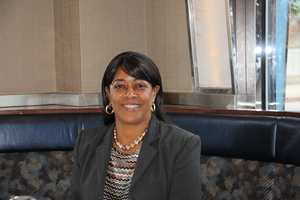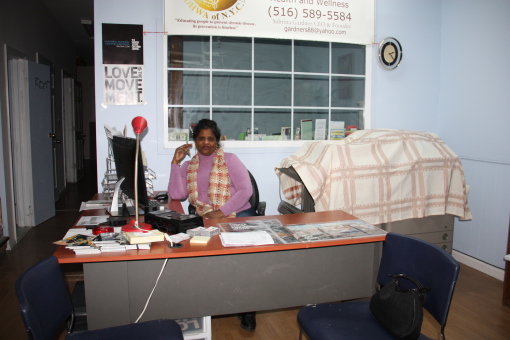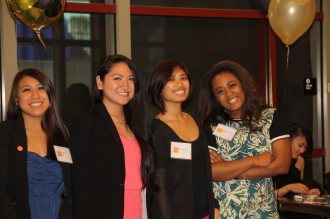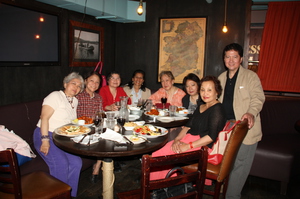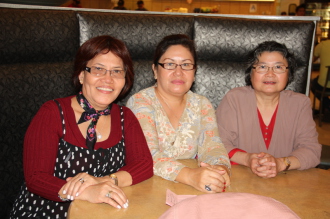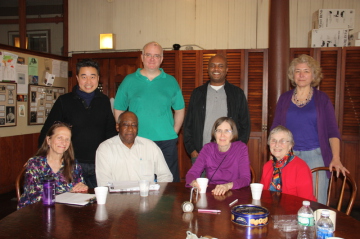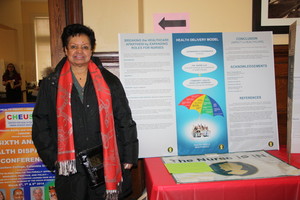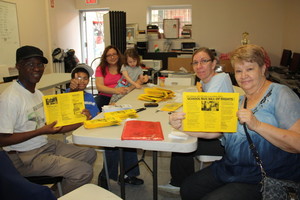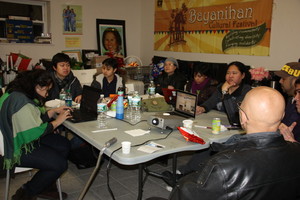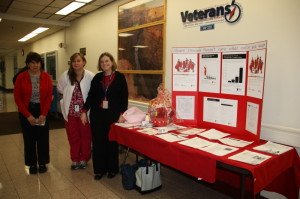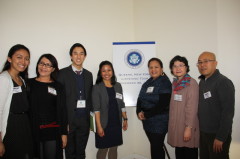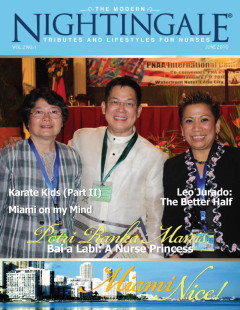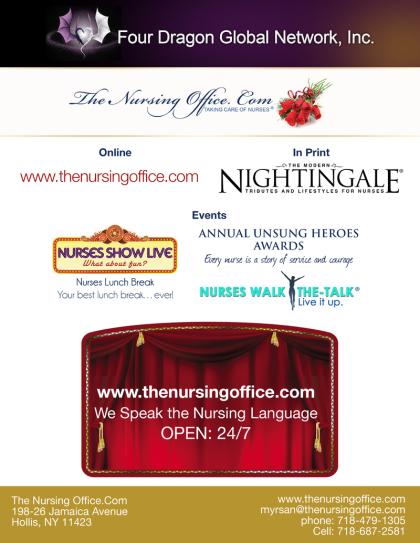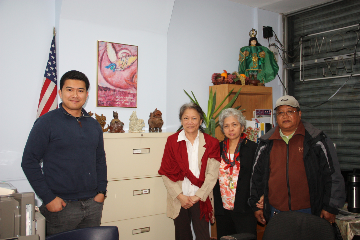BUSINESS DEVELOPMENT and ENTREPRENEURSHIP
We have a lot of business opportunities here in The Nursing Office.Com where we maintain our identity as a Social Enterprise with a Mission: Taking Care of Communities.
We invite you to join us and launch your business with us. Our financial creativity is just beginning.
For more information, you may visit us at our company site www.fourdragon.com where there is more than nursing. Come and Soar with the Dragons and have Fun!
BACKGROUND
Big Business Finally Learns That Wellness Is Good Business
2014 has been the year when the discussion of well-being has migrated from health and wellness magazines to business magazines.
Wellness, and how to integrate it into our work lives, has become the hottest topic in the business pages. And that should come as no surprise. Because, though it would be nice if this change were simply because of altruism, what's happening is that big business is finally realizing that the health of their employees and the health of their bottom line are inseparable. In other words, big business has learned that wellness is good business. As Dr. Rajiv Kumar, CEO of the wellness solutions company ShapeUp wrote in the Harvard Business Review, "a growing body of research suggests that nurturing employee health and wellness has a significant impact on productivity -- which, as we all know, has a direct bearing on company profitability." Kumar goes on to cite a study out of Harvard that showed that for each dollar spent on wellness programs, large companies got back $3.27 in reduced health costs, and $2.73 in costs connected to absenteeism. That's no small savings, since, according to a study by the Milken Institute, lost productivity due to chronic conditions like heart disease, hypertension, pulmonary conditions, and diabetes cost the U.S. $1.1 trillion.
And that's because of the very direct connection between our state of minds and bodies and the quality of our work. High performance, whether in sports or in business, depends not just on training and hard work, but on making sure our resources are replenished. As Co-Director of the Emotional Intelligence Consortium Dr. Daniel Goleman writes, just as in sports, "this work-rest-work-rest cycle also applies to helping our brain maintain maximal focus at work." Smart businesses are realizing that the resources employees need to do their jobs aren't just computers and desks. Making sure employees have the inner resources is just as important, if not more so. "Top performance requires full focus, and sustaining focused attention consumes energy – more technically, your brain exhausts its fuel, glucose," writes Goleman. "Without rest, our brains grow more depleted. The signs of a brain running on empty include, for instance, distractedness, irritability, fatigue, and finding yourself checking Facebook when you should be doing your work." In other words: much of what happens when a tired brain, and body, is pushed into working 12-hour days and 60-plus hour work-weeks.
The good news is that more and more companies are putting this wisdom – ancient but newly validated by science – into action. Kumar cites a 2013 RAND study that showed that 80 percent of employees working for businesses of 50 or more employees are offered some sort of wellness program at work.
And the range of companies seeing the upside of giving their employees some downtime is growing every day. Enterprise software company SAS, for instance, deliberately staffs the company so that people don't have to regularly work long hours. As HuffPost's Ann Brenoff wrote:
You don't have to lie in order to go watch your kid in the school play:
It's OK to just get up from your desk and go. Really. SAS trusts that you'll get the job done. So employees can skip the part where they have to get a worried look on their face and say the school nurse just called and they must split ASAP, so sorry. SAS believes its employees will be more relaxed and happier knowing they are also being good parents, and that they will get the job done.
One result is that turnover at SAS runs about 4 percent, well below the industry average of 20 percent.
At Intel, they're expanding their 9-week mindfulness course "Awake@Intel" to make it available to their over 100,000 employees. Among those who have already taken part, on a 10-point scale there's been a 2 point decrease in experiencing stress, a 3 point increase in wellbeing and happiness and a 2 point increase in creativity and new ideas. "People get more authentically related to each other – beyond competency levels and their roles," says Anakha Coman, who co-founded the program along with Lindsay Van Driel. "The corporate mask that people put on when they walk through the door comes down."
L.L. Bean, meanwhile, encourages employees to create their own wellness initiatives. If you end up getting 15 or more others to sign up, the company will fund the program.
At the San Francisco-based task management company Asana, in addition to being offered two organic meals a day, yoga, massages, and life coaching, employees can create their own customized workstations.
Likewise, workers at Etsy receive a stipend to use on their workstations, which are handmade, many in Etsy's woodshop. The company also has a "breathing room," which Vice President Matt Stinchcomb describes as "a digital device-free room with meditation cushions." There's also an "Etsy School," in which employees are encouraged to share their passions. Topics include juggling, meditation, screen printing and, yes, "therapeutic doodling." And another innovation Etsy is working to establish is a "gross happiness index of Etsy employees." I'm guessing it's going to be high.
Johnson & Johnson has a program called "Energy for Performance in Life," which teaches employees not just how to optimize their productivity at work, but also at home. Employee participation is up to 90 percent. The company also pays employees to create health profiles, which a wellness program can then be tailored to. Their return on investment for every dollar spent on wellness? $4.
A survey from Fidelity Investments shows that wellness participation is up nearly 60 percent from 2009, while almost 90 percent of employers provide some kind of incentives for wellness participation.
At Boston Consulting Group, a management consulting firm that spent – or, rather, invested – $14 million in wellness programs last year, if you work more than 60 hours a week for 5 weeks, a "Red Zone Report" will be issued so that managers can make adjustments. At General Mills, the range of wellness programs is nearly as wide as that of their products. The company has a "Take 10 program," in which fitness experts offer on-site stretching, breathing, meditation and health activities. If that's not enough, there's also fly-fishing, birding and good ol' dodge ball. But in the wellness world, the company is most known for its mindful leadership program, begun by Janice Marturano, who has gone on to found the Institute for Mindful Leadership. "Mindfulness is about training our minds to be more focused, to see with clarity, to have spaciousness for creativity and to feel connected," she said. "That compassion to ourselves, to everyone around us – our colleagues, customers – that's what the training of mindfulness is really about. There is no work-life balance. We have one life. What's most important is that you be awake for it."
At Aetna, 13,000 employees have participated in one of their mindfulness-based wellness programs, which is one reason why Aetna's health costs actually decreased by 7 percent in 2012, even while the costs for most employers were going the other direction. A study – published in theJournal of Occupational Psychology – of one of the programs while it was being piloted found that participants saw their levels of stress go down 30 percent. And since the program has expanded, employees have realized gains of 69 minutes of productivity per week.
But one of the most noteworthy manifestations of this global shift is what's going on in the boiler room of burnout: the banking and finance world. This is the industry that practically invented burnout, and which has most stubbornly clung to the dangerous myth that equates overwork with dedication and productivity. That's why, because of the influence finance has on the workplace practices of the business world at large, any change in this sector is so important.
Many of the recent changes were prompted by a tragic spade of suicides in the finance world. In response, many of the large banks began a long overdue rethink of their workplace practices – because of the effect both on their employees and on the decisions made. And so early this year, many of them began rolling out some first steps at reform.
At Bank of America, employees were advised to take four weekend days off each month and required to take their vacation days.
Goldman Sachs convened a "junior banker task force" to deal with the issue. The company also banned employees from going into the office from 9 p.m. on Friday to 9 a.m. on Sunday, said that workers should not simply transfer their work from office to home and "strongly encouraged" staff to take three weeks of vacation per year.
Barclays rolled out a policy for junior bankers of mandatory leaves of two non-consecutive weeks per year, and allowed no more than 12 consecutive days of work in the office. "The demands of the job are high," read the internal memo announcing the policy, "but our best work is when we work intelligently as a team; not just because we work the hardest or the longest." Of course, research has shown that we almost never do our best work when we work the longest, but it's a start.
JPMorgan Chase allowed analysts the choice to take one "protected weekend" per month. Though, according to the New York Times, one former staffer complained that the weekends had to be scheduled too far in advance and when he used one to see a Broadway show, he was expected to check his email and respond to anything urgent.
This is much like the policy at Credit Suisse, where an internal memo told staffers to stay out of the office on Saturdays, but added, "junior bankers are expected to reply to emails in a timely manner throughout the weekend."
And, as we know, if you're responding to emails, or even reading them, you're at work – no matter where your body happens to be. Even if no urgent emails come through, just keeping yourself in a state of anticipation for them means you're not going to be fully present wherever you happen to be, and with whomever you happen to be with. And, just as important, it means you're not going to be getting much of the proven recharging benefits of having left the office.
Likewise, in a memo from January, Citigroup joined the other banks in saying analysts should be out of the office from Friday evening until Sunday morning, though also "they should continue to check their email." But proof of the progress we're making comes later in the memo, which states:
Compliance with both the Mandatory Vacation Utilization and Protected Weekend Day guidelines will be tracked and reported to senior management on a regular basis. It has been made clear that exceptions should be rare and defensible. Any exceptions to the Protected Weekend Day guideline must be pre-approved by a Group Head.
So approval is now needed to come into the office, and Citi staff need to come up with a defense to not take a vacation. Up until now, in most companies, that was the exact opposite.
So, yes, while there's still a lot of progress to be made – especially in untethering workers from their phones when they're finally allowed out of the office – the mere fact that Wall Street and the financial world are speaking in these terms is a sign of how deeply these ideas have penetrated our culture.
Of course, this might be a sign of enlightenment, but it's also a sign of simply reading the market – which is what the heads of the banks are trained to do. AsQuartz'sMark DeCambre writes, the new policies aren't just a reaction to the recent suicides, they're also "a reflection of the fact that top graduates now appear to be less inclined to view Wall Street – and the long hours of financial services-as an ideal career path." According to a Harvard Business School study he cites, in 2006, 42 percent of HBS grads went into finance – the number now is 27 percent.
But no matter the reason for the changes, it's clear that the way we've been working -- by working ourselves into the ground, if not the grave -- is not sustainable. Not even for Wall Street. And as more and more of the corporate world realizes this, the benefits will ripple through our entire society. "Thanks to their reach and influence on employees, workplaces have a unique power to reframe the mindset around health itself -- from one of sickness to wellness," write Cortney Rowan and Karuna Harishanker, design strategists at the innovation firm Altitude.
And that, in turn, will help bring about the larger change from a model of success based on money, power, and overwork to one based on well-being, wise decisions and good ideas. As we can see from the examples above, the change is happening – and happening more quickly than I could have dreamed when I began writing Thrive just a year and a half ago. There's still a lot of work to do – as entire sectors of our economy, especially those that employ our most vulnerable and struggling workers, remain untouched by this progress. But here's hoping that in another year's time, examples of companies that have seen the light will be too numerous to list.
Posted by:
http://www.linkedin.com/today/post/article/20140706003151-143695135-big-business-finally-learns-that-wellness-is-good-business?trk=mta-lnk
Four Dragon Global Network (to link)
HEALTH & WEALTH CONTINUUM
Health is Wealth: Entrepreneurship in Health and Wellness
The Nursing Office Business Model for Nurses
The Nurse is IN (Passion, Specialty, Service)
Mission: Every nurse will have a Nursing Office
I Finding your Niche, the Theme of your main service.
II Creating your Business Name
III Stating your Mission
IV Developing your Goals and Objectives
V Designing your Programs and Services
VI Organizational & Legal Set up
VII Financial Set Up & Accounting
VIII Marketing and Networking
IX Technical Support
X The Nurse is IN Action!
STEPS:
- Conceptual Start-Ups
- Moving Forward
- Business Plans
- MOU/MOA
Its more than a Franchise
- Training
- Support
- Set-Up
- Coaching
It's more than a Business
- Leadership
- Making a Difference/Giving Back
- Enjoy Tax Breaks
- Make Profits in all kinds and forms.
Marketing & Social Media Networking
Publications:
- The Modern Nightingale
- The Nursing Office Community Bulletin
- Las Islas Filipinas Journal
- Mano Po Quarterly
Social Media Marketing
- FaceBook Page
- Linked In
- BLOG
- Monthly e-Journal/ CC
RESOURCES
NNBA
Wilson Shephard
SCORE
AARP
MEMORANDUM OF UNDERSTANDING and AGREEMENT
By these provisions, be it known that:
Definition of Terms:
The Nursing Office (TNO) – The Nursing Office.com is a broad coalition of individuals & organizations focused on taking care of nurses, their families and communities, by creating, organizing, collaborating, and supporting health & wellness circles in private, public and business arenas.
Four Dragon Global Network, Inc. (FDGN) – the legal corporation or entity that is doing business as The Nursing Office.com duly registered with New York Department of State.
(Add the Description/Definition for the other individual/organization/or company entering agreement with.)
“The NURSE is IN” is a A Model for Affordable Community and Public Health Delivery System designed by TNO to transform healthcare through nursing leadership.
The Nurse is IN at__________________” – TNO program to be established at ___________will encompass all activities and events jointly planned, organized, and implemented by TNO and ___________________.
- FDGN, Inc., is represented by Myrna D. Santos, RN, and Ludy Resurreccion.
- TNO may avail or use the location of_______________, for events and activities that may directly or indirectly relate to the members and/or users of __________and facilities.
- Events and special programs designed by TNO and held at _________will be a collaboration by TNO and____________.
- Production Budget or Expenses incurred in these events and special programs will include refreshments, use of space, talent fees and other related costs. The net income from these events will be assigned to The Nurse is IN Program that will be used to further the program and its cause.
- Acts, programs and services provided by TNO/FDGN may be used for the marketing of ____________to increase its revenue will be a contribution in kind/ gratis by TNO/FDGN. However, voluntary donations in cash or in kind by ________________to TNO, a non-profit organization will be most welcome.
- _______________– represented by ________ is the Executive Director of “The Nurse is In at_____________” program.
Accountability and Transparency – are the principles that govern the terms of this Memorandum of Agreement/Understanding, which include proper disclosure and procedures for dealing with potential conflicts of interest.
- Compliance – Both parties will be provided with proper and timely information regarding compliance with City regulations on using facility spaces & other related matters.
- FDGN and __________ will maintain their individual corporate identities.
- The Nurse is IN Program will be the joint and collaborative partnership between TNO and _________that will operate on a SHARED MISSION, SHARED GOVERNANCE, and SHARED RESOURCES by the staff, Board members, volunteers and other stakeholders.
- Rules and provisions for potential or actual Conflict of Interest will be dealt with accordingly through a due process of conflict resolution between the agreeing parties. This process will prevent any legal suits that these parties are not allowed to, ever.
- These provisions are designed and agreed upon by both parties.
- Amendments may be made throughout the collaboration/partnership.
Due Process for Conflict Resolution
- Define the Problem/Conflict
- Design Strategies for Resolution with SWOT format Analysis
- Decision is made to promote a 50/50 advantage between the 2 parties
- No court resolutions allowed from both parties.
"We Mean" BUSINESS MEETINGS
NOVEMBER 2017 RICHMOND HILL, NY
Greetings
Community News
Community Bulletin
AD for Services, Programs
Lay-Out for Constant Contact Page
PHILIPPINE COMMUNITY CENTER SERVICES for AGING
CREATING a NICHE for FIL-AMS in NY
INVEST in YOUR COMMUNITY
INVEST in PCCSA
(Services for Aging Seniors)
DEVELOPING NEW ENTREPRENEURSHIPS
for UNITY, VISIBILITY, SUSTAINABILITY
Please join us for TEA:
Consuelo Almonte I 347-488-9386 I connie_almonte@yahoo.com
Myrna D. Santos I 718-687-2581 I myrsan@thenursingoffice.com
Your People, Your Business, Your Own
115-03 Atlantic Avenue, Richmond Hill, NY 11418
Partnerships & Affiliate Programs
Accounting
Advertising & Marketing
Art Galleries
Artists
Beauty Products
Books
Business Consulting
Career Coaching
Catering
Chiropractors
Cleaning Services
Clinical Resources
Concierge Services
Construction
Dating Services
Desktop Publishing
Doctors
Ecommerce
Employment & Staffing Agencies
Event Planning
Event Venues
Exhibits & Expos
Fashion
Film Production
Financial Education
Financial Services
Fitness
Florists
Fundraiser
Graphic Design
Health Products
Human Resources
Image Consulting
Immigration
Information Technology
Insurance
Internet marketing
Investments
Legal Services
Library and Clinical Resources
Magazine Publishing
Marketing and Public Relations
Media
Mortgage
Nurses in Business
Nursing Education
Photographers
Placement Agency
Printing
Publications
Research Services
Restaurants
Retirement
Social/Professional Networking
Stress Management
Translation services
Travel & Tourism
T-shirt Printing & Souvenirs
Web design
EVENT PLANNING
Antique &Trunk Collection (Educational, Exhibits, Reception)
TULOY ang LIGAYA SERIES
Ang Pagdating ng Krus at ng Espada
Emotional Intelligence: What is it and how Does it Relate to Entrepreneurial Success?
From a scientific (rather than a popular) standpoint, emotional intelligence is the ability to accurately perceive your own and others’ emotions; to understand the signals that emotions send about relationships; and to manage your own and others’ emotions.
Emotional Intelligence is actually the blend of five components reflecting the ability to recognize, connect with, and learn from one’s own and other people’s mental states:
- Self-awareness (good sense of one’s own emotions and happiness)
- Self-regulation (ability to control emotions such as anger and frustration)
- Motivation (defined as “a passion for work that goes beyond money and status”)
- Empathy for others (being a good observer of other’s emotions and being able to react to these)
- Social skills (such as proficiency in managing relationships and building networks)
Why is Emotional Intelligence important?
For many years, researchers assumed that intelligence was the strongest predictor of business and entrepreneurial success. Intelligence, often measured as IQ, shows how we learn.
Others assumed that certain personality types were more likely to emerge in high profile entrepreneurs. Personality or “style” is measured via a set of relatively hardwired tendencies such as introversion/extroversion, comfort with details versus ambiguity, etc.
But when Emotional Intelligence was introduced about a decade ago, EI emerged as a better predictor of success than intelligence or personality type. In many ways this was an encouraging outcome. Intelligence and personality are stable traits that most people are born with or are very stable over time. This would mean that one’s IQ or “personality style” would predetermine his ability to be an effective leader. Emotional intelligence, however, is a flexible set of skills that can be acquired and improved with practice.
How does Emotional Intelligence predict entrepreneurial success?
TalentSmart tested emotional intelligence alongside 33 other important workplace skills, and found that emotional intelligence is the strongest predictor of performance, explaining a full 58% of success in all types of jobs.
High IQ and relevant experience are also very important. However, highly intelligent or experienced candidates who lacked emotional intelligence were more likely to flame out. This means that an entrepreneur who understands and can moderate his own emotions and be responsive to the emotions of others is much more likely to be able to create the business team and partners needed for strong growth. Super smart “mavericks” with low EI may ignore important emotional data putting the firm at risk.
There is also evidence that EI is linked to innovation as emotionally intelligent entrepreneurs are more open to outside ideas of others and more flexible in creating new connections.




